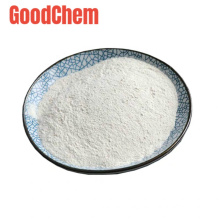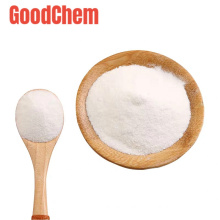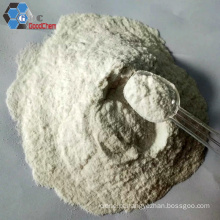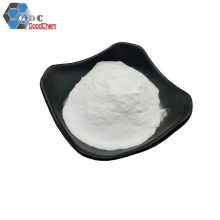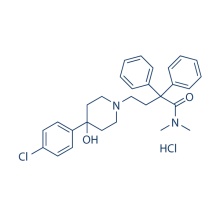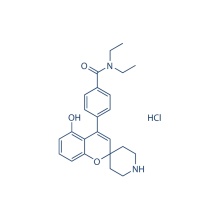.cp_wz table {border-top: 1px solid #ccc; border-left: 1px solid #ccc; } .cp_wz table td {border-right: 1px solid #ccc; borda inferior: 1px sólido #ccc; preenchimento: 5px 0px 0px 5px;} .cp_wz tabela th {border-right: 1px solid #ccc; border-bottom: 1px solid #ccc; preenchimento: 5px 0px 0px 5px;} \ n Peso molecular: 428,95 ADL5859 HCl é um agonista do receptor δ-opioide com Ki de 0,8 nM, seletividade contra o receptor opioide κ, μ e fraca atividade inibitória no canal hERG. Fase 2. \ n ADL5859 agoniza o receptor δ-opioide com uma seletividade 1000 vezes maior do que o receptor µ- ou κ-opioide com Ki de 32 nM e 37 nM, respectivamente. ADL5859 exibe atividade inibitória fraca no canal hERG com um IC50 de 78 μM. O EC50 de ADL5859 contra o receptor opióide δ é de 20 nM. Na dose de triagem de 3 mg / kg po, ADL5859 produz 100% de reversão da hiperalgesia na pata inflamada. O ED50 oral de ADL5859 no ensaio de hiperalgesia mecânica FCA é 1,4 mg / kg. A anti-hiperalgesia produzida por ADL5859 (3 mg / kg, po) é revertida pelo pré-tratamento com o antagonista opioide δ naltrindol (0,3 mg / kg sc), demonstrando assim um efeito mediado pelo receptor δ. No ensaio de natação forçada em ratos, ADL5859 (3 mg / kg po) produz uma atividade semelhante a um antidepressivo robusto, como evidenciado por uma diminuição significativa no tempo gasto imóvel e um aumento significativo no tempo gasto nadando. A biodisponibilidade de ADL5859 (3 mg / kg po) em ratos e cães é de 33% e 66%, respectivamente. O ADL5859 reduz com eficiência a dor inflamatória e neuropática, principalmente pelo recrutamento de receptores δ-opioides expressos por neurônios que expressam Nav1.8 periféricos. Ensaio de células de protocolo (apenas para referência): [1]
|
Cell lines
|
Chinese hamster ovary (CHO) cells stably expressing human κ, μ, or δ opioid receptors
|
|
Concentrations
|
0 nM-10 nM
|
|
Incubation Time
|
60 minutes
|
|
Method
|
Membrane preparations from Chinese hamster ovary (CHO) cells stably expressing human κ, μ, or δ opioid receptors are prepared. The assay buffer used is composed of 50 mMtris(hydroxymethyl) aminomethaneHCl, pH 7.8, 1.0 mM ethylene glycol bis(β-aminoethyl ether)-N,N,N',N'-tetraacetic acid (EGTA free acid), 5.0 mM MgCl2 10 mg/L leupeptin, 10 mg/L pepstatin A, 200 mg/L bacitracin, and 0.5 mg/L aprotinin. After dilution in assay buffer and homogenization in a Polytron homogenizer for 30 seconds, membrane proteins (10-80 μg) in 250 μL of assay buffer are added to mixtures containing ADL5859 and [3H]diprenorphine (0.5-1.0 nM, 25000-50000 dpm) in 250 μL of assay buffer in 96-well deep-well polystyrene titer plates and incubated at room temperature for 60 minutes. Reactions are terminated by vacuum filtration with a Brandel MPXR-96T harvester through GF/B filters that have been pretreated with a solution of 0.5% polyethylenimine and 0.1% bovine serum albumin for at least 1 hour. The filters arewashed four times with 1.0 mL each of ice-cold 50 mM Tris-HCl, pH 7.8, and 30 μL of Microscint-20 is added to each filter. Radioactivity on the filters is determined by scintillation spectrometry in a Packard TopCount. [3H]Diprenorphine with a specific activity of 50 Ci/mmolisused. The Kd values for [3H]diprenorphine binding are 0.33 nM for the κ and μ receptors and 0.26 nM for the δ receptor. Receptor expression levels, determined as Bmax values from Scatchard analyses, are 4400, 4700, and 2100 fmol/mg of protein for the κ, μ, and δ receptors, respectively. Preliminary experiments are performed to show that no specific binding is lost during the wash of the filters, that binding achieved equilibrium within the incubation time and remained at equilibrium for at least an additional 60 minutes, and that binding is linear with regard to protein concentration. Nonspecific binding, determined in the presence of 10 μM unlabeled naloxone, is less than 10% of total binding. Protein is quantified by the method of Bradford. The data from competition experiments are fit by nonlinear regression analysis with the program Prism using the four-parameter equation for one-site competition, and Ki values are subsequently calculated from EC50 values by the Cheng-Prusoff equation.
|
Estudo Animal: [2]
|
Animal Models
|
Nav1.8-cKO mice, CMV-KO mice, C57BL6/J × SV129Pas mice
|
|
Formulation
|
0.5% hydroxypropyl methylcellulose/0.1% Tween 80
|
|
Dosages
|
10 mg/kg - 300 mg/kg
|
|
Administration
|
Administered via p.o.
|
|
Solubility
|
0.5% hydroxyethyl cellulose/0.1% Tween 80,
30 mg/mL
|
|
* Please note that Selleck tests the solubility of all compounds in-house, and the actual solubility may differ slightly from published values. This is normal and is due to slight batch-to-batch variations.
|
Conversão de diferentes modelos de animais com base em BSA (valor com base em dados das diretrizes preliminares da FDA)
|
Species
|
Baboon
|
Dog
|
Monkey
|
Rabbit
|
Guinea pig
|
Rat
|
Hamster
|
Mouse
|
|
Weight (kg)
|
12
|
10
|
3
|
1.8
|
0.4
|
0.15
|
0.08
|
0.02
|
|
Body Surface Area (m2)
|
0.6
|
0.5
|
0.24
|
0.15
|
0.05
|
0.025
|
0.02
|
0.007
|
|
Km factor
|
20
|
20
|
12
|
12
|
8
|
6
|
5
|
3
|
|
Animal A (mg/kg) = Animal B (mg/kg) multiplied by
|
Animal B Km
|
|
Animal A Km
|
Por exemplo, para modificar a dose de resveratrol usada para um camundongo (22,4 mg / kg) para uma dose baseada na BSA para um rato, multiplique 22,4 mg / kg pelo fator Km para um camundongo e, em seguida, divida pelo fator Km para um rato. Este cálculo resulta em uma dose equivalente de rato para o resveratrol de 11,2 mg / kg.
|
Rat dose (mg/kg) = mouse dose (22.4 mg/kg) ×
|
mouse Km(3)
|
= 11.2 mg/kg
|
|
rat Km(6)
|
\ n Informação Química
|
Molecular Weight (MW)
|
428.95
|
|
Formula
|
C24H28N2O3.HCl
|
|
CAS No.
|
850173-95-4
|
|
Storage
|
3 years -20℃Powder
|
|
6 months-80℃in solvent (DMSO, water, etc.)
|
|
Synonyms
|
|
|
Solubility (25°C) *
|
In vitro
|
DMSO
|
86 mg/mL
(200.48 mM)
|
|
Water
|
5 mg/mL
(11.65 mM)
|
|
Ethanol
|
1 mg/mL
(2.33 mM)
|
|
In vivo
|
0.5% hydroxyethyl cellulose/0.1% Tween 80
|
30 mg/mL
|
* <1 mg/ml means slightly soluble or insoluble.
* Please note that Selleck tests the solubility of all compounds in-house, and the actual solubility may differ slightly from published values. This is normal and is due to slight batch-to-batch variations.
|
|
Chemical Name
|
Benzamide, N,N-diethyl-4-(5-hydroxyspiro[2H-1-benzopyran-2,4'-piperidin]-4-yl)-, hydrochloride (1:1)
|
Calculadora de molaridade Calculadora de diluição Calculadora de peso molecular
Grupo de Produto : Sinalização Neuronal > Inibidor do receptor opioide

